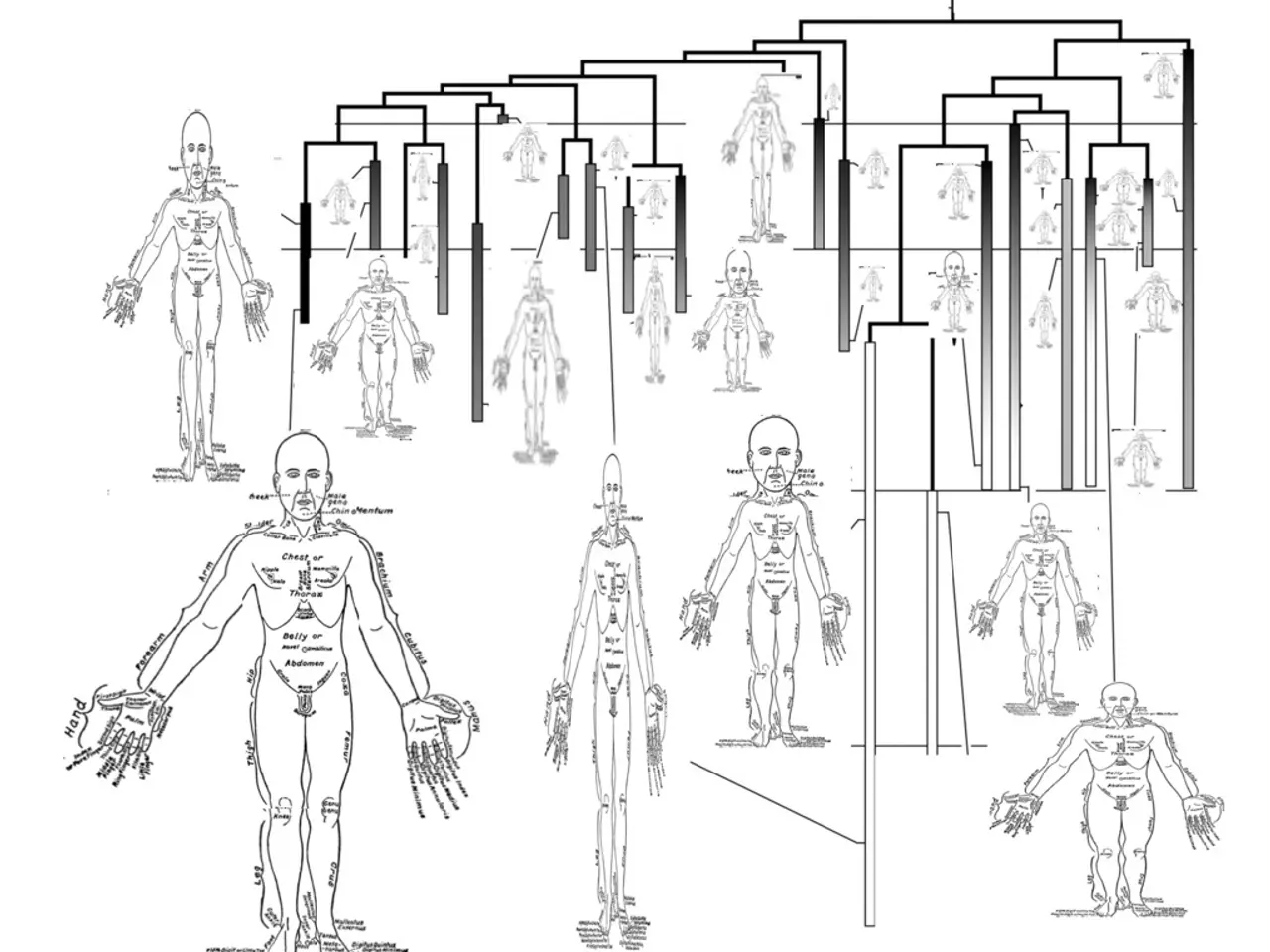Platysma Muscle's Role in Facial Expressions Revealed
Scientists have discovered more about the platysma muscle, a key player in facial expressions. This muscle, located in the chest, neck, and facial region, plays a significant role in conveying negative emotions.
The platysma muscle originates from the upper portions of the pectoral and deltoid muscles. It spans the collarbone and the side of the neck, narrowing as it reaches the neck. Notably, it covers part of the sternocleidomastoid muscle in the neck and extends upwards to the lower jawbone (mandible).
The platysma muscle allows for slight mouth opening and drawing out of the corners of the lips to the side and down. In some cases, it can extend as far as the cheekbone and the lower part of the orbicularis oculi muscle. These movements are associated with conveying negative emotions like fear and fright.
The facial nerve, specifically the cervical branch of the facial nerve (cranial nerve VII), enables the movement of the platysma muscle in the cheek. The facial nerve also enables the platysma muscle to move overall.
The platysma muscle, with its extensive reach from the chest to the face, plays a crucial role in facial expressions. Its movements, facilitated by the facial nerve, help convey important emotional cues. Further research is ongoing to understand its full range of functions.






